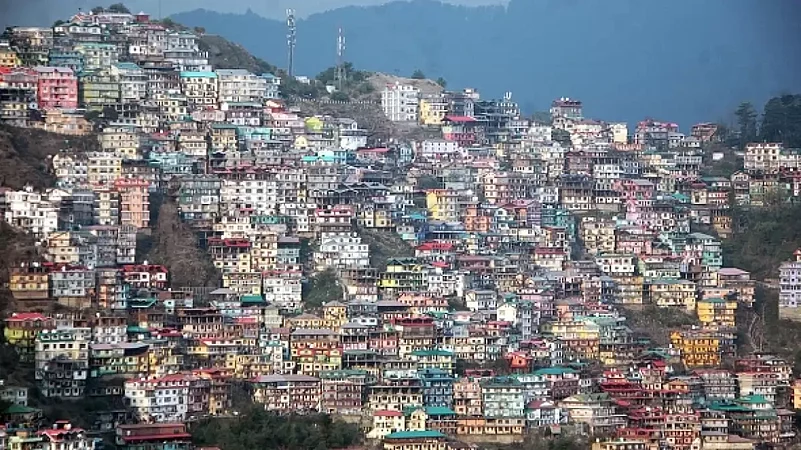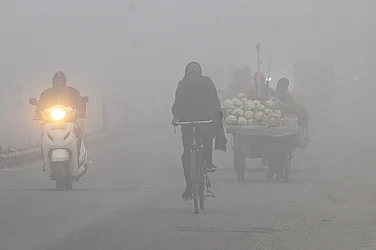The natural setting of Shimla has suffered due to the continuing felling of trees, and the deterioration of soil and water quality. Any additional construction in the town will aggravate the existing threat and damage the ecosystem, and hence should not be permitted.
This was one of the findings of an expert committee —Society for Environment Protection and Sustainable Development (EPSD)— set-up by the National Green Tribal (NGT) in 2013 to carry out Environment Impact Assessment (EIA) study of Shimla’s 17 green belts.
Among the 12 major recommendations which the committee has made include a complete ban on all type of construction activities in the entire planning area of Shimla, including the 17 green belts. This should uniformly apply to government as well as private buildings, the committee said.
“But this was not just a wake-up call or an alarm. Shimla has exceeded its carrying capacity by 150 per cent since 2009-10. What happened between August 13 and 16 was predicted by experts, the NGT, the Himachal Pradesh High Court and also the Town and Country Planning,” says Dr Suresh Attri, principal scientist and climate change expert at the Himachal Pradesh’s Department of Environment and Climate Change.
Exactly on the same lines, the Union Ministry of Environment, Forests and Climate Change (MoEFCC) has endorsed the proposal of the Supreme Court to undertake a comprehensive study of 13 Himalayan towns that are crumbling under the weight of landslides and land subsistence.
The move that comes in the aftermath of unprecedented rains and landslides in Shimla recently has once again brought the focus back on the need to freeze haphazard construction in the name of growth, exposing the town to calamities like landslides and earthquakes.
The Ministry of Environment Forest and Climate Change filed in the Apex Court says: “It was imperative for the states and UTs to spell out the steps taken to prevent further degradation of the ecosystem and propose their action plans, which could be looked into by a technical committee, headed by the Director of the GB Pant National Institute of Himalayan Environment.”
The ministry said that to achieve the final goal of assessing the accurate carrying capacity of each hill station, some steps ought to be taken.
On August 21, the Supreme Court had mooted constituting an expert panel for conducting a “complete and comprehensive” study on the carrying capacity of the Himalayan region in the country, where unplanned development has caused devastation in recent times, terming it a “very important issue”.
Unprecedented rains and landslides in Himachal Pradesh left 421 people dead since June 2023, 45 in Shimla alone. Building, bridges, and other infrastructure projects, including highways have suffered massive damages. The total loss is estimated at over Rs 10,000 crore.
Almost eight years back, the Himachal Pradesh High Court had also shown a red flag to Shimla’s burgeoning constructions, new institutional buildings, multi-story hotels and high-rise commercial buildings — most of them illegal.
Another committee set up by the NGT in 2016-17 to study Shimla’s carrying capacity had also noted that most buildings are highly unsafe, built on unstable and sinking slopes, and will eventually collapse. This could result in a significantly high toll, difficult to estimate.
“A large number of buildings are constructed on slopes exceeding 45 degrees, and in certain cases, the buildings are constructed on slopes exceeding 70 degrees. The subsidence of land in a number of areas and landslides are becoming frequent as climate change may act as an amplifier,” said the report.
The report suggested an urgent need to decongest and depopulate Shimla, particularly areas like Sanjauli, Dhali, Tutu and Lower Lakkar Bazar. All institutions, including defense establishments, which are not required to operate from Shimla, must be relocated to the plains or other areas, the report reads.
The British era town —which became the summer capital of India in 1864— was proposed for a population of 25,000. Currently, the population of the hill town stands at 2.75 lakh. There are nearly 20,000 unauthorised buildings, constructed in violation of the requisite norms and even without approved plans. Sixty per cent of these either fall in the sinking zones or are built over blocked drainage channels and traditional water bodies. The visuals of a multi-story building at Krishna Nagar, which also brought down with it a modern slaughter house, made the high court warning about Shimla prophetic.
Taking note of the 2015 Nepal earthquake, which left 9,000 people dead, the court had said because Shimla also falls in the same seismic zone, it is high time we learn from the recent devastating tragedies in the Himalayan region.
“If a similar tragedy strikes again, many buildings in the town, constructed illegally would collapse like a pack of cards,” the court said.
Commenting on the PIL relating to illegal constructions, the court said that haphazard and illegal construction was being done in Shimla for years, which turned in the hill city in a ‘concrete jungle’.
A high-intensity earthquake can turn Shimla into a rubble grave, as it falls in seismic zones IV and V. The court had said that most of the buildings violate the rules and building norms.
Most of the buildings hang precariously on steep slopes and cling to each other. A medium and high intensity earthquake can be devastating for overcrowded settlements with no escape route. There is a possibility of most of these buildings collapsing.
The court had observed that haphazard, unplanned and illegal constructions have spoiled the beauty of the hill towns of Himachal Pradesh, especially capital Shimla.
Tikender Panwar, the former Deputy Mayor of Shimla, recalls: “During our tenure, between 2012 and 2017, with Sanjay Chauhan as Mayor, we had rejected several proposals of buildings, including the newly-built 13-storey OPD block and mega parking in the nullah. But, after our term, the maps were approved. Now, during the recent monsoon fury, the OPD block got flooded with water due to the blocked nullah. It’s still in a precarious condition and may get swept away if it rains in Shimla like it did between August 13 and 16.”
The town’s carrying capacity is beyond exhausted, says Panwar, adding that it’s “criminal” to let any more buildings to be constructed in Shimla as the town can no longer take the burden of more concrete, steel and cement.
The NGT in its 2017 order had suggested that all constructions in the Shimla Planning Area should be restricted to 2.5 floors and it also banned new constructions in the green belt, but the previous BJP government, as part of the new Shimla Development Plan, proposed allowing constructions even in banned core, heritage and green areas.
Under pressure from the builder’s lobby and business community, the incumbent Congress government, ahead of the Shimla Municipal Corporation polls, has gone a step further and allowed construction in the green belts.
The Supreme Court intervention has stayed the implementation of the Shimla Development plan.
In 2021, an eight-storey building in Shimla’s Kachi Ghati area had collapsed due to structural defects and sharp gradient on a loose mountain soil. Another multi-storey building collapsed at the Fingask estate in 1992, killing 22 persons, including its owners.
Shishu Patial, a senior journalist, recalls: “Shimla’s sinking history is very old. The first landslide in Shimla happened in the late 1960s. A boy from his school—the erstwhile Harcourt Butler High School—was at Lakkar Bazar. Shimla’s ridge had remained a noted site for sinking. That time, the population of Shimla was just about a lakh, or less. No one can imagine how Shimla would survive any tragedy as it has exceeded its carrying capacity.”
Experts, environmentalists, geo-scientists and urban planning experts like Panwar have hailed the Supreme Court move. They suggest the recommendations should be implemented in a time-bound manner so that Shimla’s identity could be preserved.


























